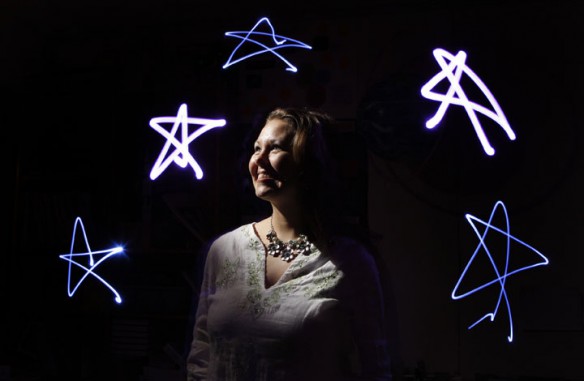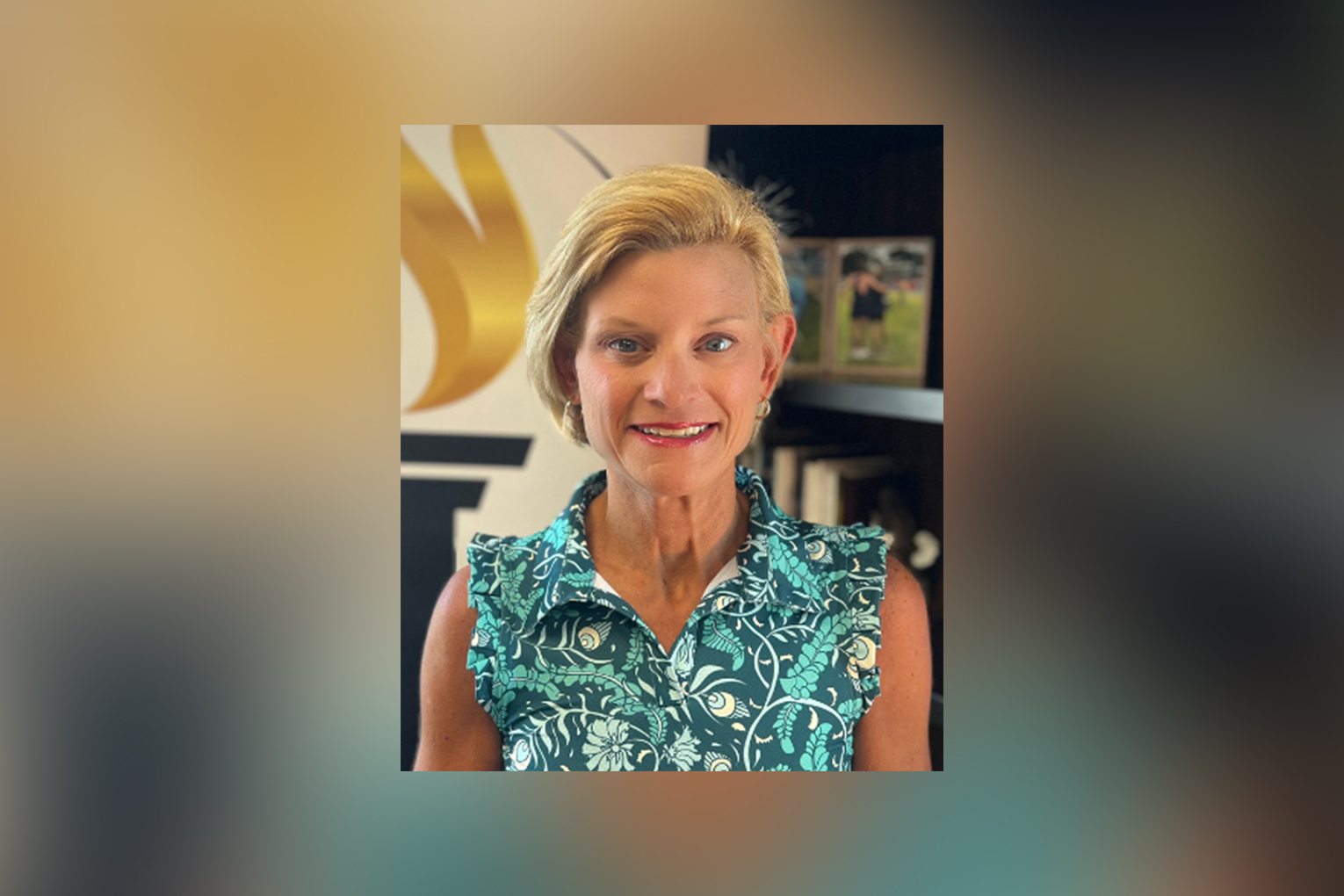
Jennifer Carter, an astronomy teacher at Rowan County Senior High School, encourages her students to analyze data to discover pulsars. Photo by Amy Wallot, March 16, 2012
By Susan Riddell
Not too long ago, a student in Jennifer Carter’s class told her he was up all night playing a video game. She had no sympathy for the tired student at the time and told him she expected to have his full attention in class.
Weeks later, Carter, a teacher at Rowan County High School, overheard the same student tell a friend that he was exhausted because he had been up all night again. This time, however, video games were not the cause.
Instead, the student was putting off sleep for pulsar data analysis.
“I like it that most of my students enjoy the process of data analysis and choose to continue analyzing data on their own free time,” said Carter, who has many students who have spent great amounts of time at home analyzing data.
“This particular student mentioned above has taken the data analysis process to the next level,” she added. “He has begun an e-mail dialogue with astronomers from the Fermi gamma ray space telescope to begin using other telescope databases to extend his research. He is making great progress with that right now.”
This is Carter’s second year at Rowan County High and her fourth year as a teacher. Aside from her freshman classes, she has four astronomy courses: Light and the Hidden Universe; Stars, Galaxies and Cosmology; Pulsar Astronomy; and Planetary Science. Carter also facilitates two Morehead State University dual credit college courses: Introduction to Satellites and Space Systems I and II.
She became a teacher member of the Pulsar Search Collaboratory (PSC) in 2010 during a summer institute for teachers and students. The Pulsar Search Collaboratory is a National Science Foundation project funded by the National Radio Astronomy Observatory and West Virginia University.
Carter created a 12-week course in pulsar astronomy because “the PSC is so well designed and when implemented it provides a high-quality and real-world experience for students who wish to pursue a career in any science discipline,” she said. “The PSC has the potential to change a student’s life.”
Students are allotted three out of five days in the computer lab to analyze data, Carter said. “This leaves two days of class time for content, Skyped lectures from professional astronomers and weekly assignments or assessments,” she said.
The students are trained to analyze archived data from the world’s largest radio telescope, the Green Bank Telescope (GBT) in West Virginia.
“So the students are looking at diagnostic plots of the data that contain graphs of the reduced data along with numerical values associated with the data that are characteristic of pulsars,” Carter said. “They use a scoring system that provides a tracking and organized database of all the data they have analyzed. This allows students to access the data they’ve looked through as a whole for further analysis.”
Several things have to happen for a student to discover a pulsar.
Once students identify a pulsar-like pattern in the graph, they compare the spin rate of the pulsar with known sources of radio frequency interference (RFI) to the main distractor in the data. RFI are man-made signals that can contaminate the data during the observation time, according to Carter.
“Students are trained to distinguish true pulsar-like signals from RFI,” Carter said. “If the plot proves to not be RFI, then the student checks a catalogue of known pulsars to determine if the plot represents a signal from a previously discovered pulsar. The students are trained to use numerical data from the plot to determine if their data matches any of the listed known pulsars in the region of space the plot represents.”
Near the end of a lengthy conformation process that includes feedback from astronomers, a student on the verge of a potential pulsar discovery can visit Green Bank to participate in an observation. If the signal is observed during this observation, its status is officially changed from pulsar candidate to discovered pulsar.
Carter said it’s a very exciting and rewarding moment for a student. So far, two of Carter’s students have discovered pulsars.
The first pulsar was discovered last year by Hannah Mabry, now a senior. Mabry received a five-year undergraduate research fellowship from Morehead State University in the Space Science Center that began at the start of the school year.
For her senior thesis, Mabry is building a pulsar timer for a 21-meter radio telescope at MSU.
The second pulsar, discovered by Jessica Pal on a January snow day, is a binary millisecond pulsar system with a precise spin rate, Carter said. “This type of pulsar is used by the naval observatory to calibrate the atomic time standard,” Carter said. “It also is used by scientists seeking to directly detect for the first time gravitational waves predicted by Einstein’s Theory of Relativity.”
Fewer than 700 high school students in the country are analyzing pulsar data. Of those, only five students have successfully identified pulsars for the Pulsar Search Collaboratory with two being Mabry and Pal.
“Ms. Carter’s students are applying practices used by scientists and engineers every day,” said Kentucky Department of Education science consultant Sean Elkins. “Practices such as these are emphasized in the new Framework for K-12 Science Education and will play a prominent role in the Next Generation Science Standards.
“Having the opportunity to interact with real data allows her students to make authentic contributions to our collective scientific knowledge,” Elkins added. “Authentic scientific research is something that would be great for all Kentucky students to have the opportunity to participate in, whether in astronomy or any other scientific field.”
MORE INFO …
Pulsar Search Collaboratory
National Radio Astronomy Observatory
Jennifer Carter, jennifer.carter@rowan.kyschools.us, (606) 784-1067







Leave A Comment